Detection and Classification of Human Activity for Emergency Response in Smart Factory Shop Floor
Abstract
1. Introduction
- We proposed a human-centered test-bed for an emergency detection system. The test-bed is made up of sensors that measure vibration, breathing, movement, and distance location.
- We investigated various ML candidates using the state of the art evaluation metrics. This is critical to identifying the most efficient ML solution for the development of emergency detection systems.
- We designed a convolutional neural network (CNN) algorithm for the classification and detection of anomalous situations in the smart factory.
- We provided a novel dataset, which is available on demand to assist in research pertaining to emergency detection systems.
2. Related Works and Background Information
2.1. Safety of Persons Working in a Smart Factory Shop Floor
2.2. Safety and Security: Establishing the Difference
2.3. Smart Factory and IIoT Technologies
2.4. Machine Learning and Neural Network Approaches to Smart Factory Emergency Detection
2.5. Background on Machine Learning Algorithms
2.5.1. Support Vector Machine (SVM)
2.5.2. Naive Bayes (NB)
2.5.3. Logistic Regression (LR)
2.5.4. K-Nearest Neighbor (KNN)
2.6. Summary of Related Works and Motivation
3. TestBed Materials and Machine Learning Model
3.1. System Model of the Proposed Testbed
3.2. Vibration Sensor Description
3.3. Ultra-Wide Band (UWB) Sensor for Movement and Breathing Monitoring
3.4. Light Detection and Ranging (LIDAR) Sensor Description
3.5. Proposed CNN Architecture Description
- Implementing a correlation test. This step is aimed at eliminating data redundancy by removing highly correlated features. Performing of correlation test also reduces the complexity and computational cost of the model.In performing correlation test, we made use of the Pearson Correlation Coefficient (PCC) given as:where is PCC, , and are the standard deviations of X and Y, respectively, and is the covariance.
- Data balancing is done to ensure even distribution of samples in classes. An uneven distribution of the total number of class samples leads to a model that leans/favors the class with majority sample, while the minority sample class(es) suffers.
- The data is converted into an image format. CNN was original meant for image classification, but, over the years, it has evolved and is now being used for both time series classification and feature extraction [53]. As CNN is the algorithm of choice in this paper (mainly due to its high accuracy), there is need to convert the dataset to be used into an image format to be recognized by the CNN.
4. Performance Evaluation and Lessons Learnt
4.1. Evaluation Metrics
4.2. Results and Discussion
4.2.1. UWB Dataset Classification
4.2.2. Vibration Dataset Classification
4.2.3. RP-LIDAR Dataset Classification
4.2.4. Summary of Results
4.3. Lessons Learnt and Research Gap
5. Conclusions
Author Contributions
Funding
Institutional Review Board Statement
Informed Consent Statement
Data Availability Statement
Conflicts of Interest
Abbreviations
| Acronyms | Meaning |
| IoT | Internet of Things |
| IIoT | Industrial Internet of Things |
| AI | Artificial Intelligence |
| PCC | Pearson Correlation Coeffiecient |
| DNN | Deep Neural Network |
| ML | Machine Learning |
| LR | Logistic Regression |
| NB | Naive Bayes |
| RMSE | Root Mean Squared Error |
| USB | Universal Serial Bus |
| CNN | Convolution Neural Network |
| RNN | Recurrent Neural Network |
| KNN | K-Nearest neighbor |
| SVM | Support Vector Machine |
| API | Application Programming Interface |
| IMU | Innertial Measurement Unit |
| UWB | Ultra-Wide Band |
| BPM | Breaths Per Minute |
| LIDAR | Light Detection and Ranging |
| UART | Universal Asynchronous Receiver-Transmitter |
| AUC | Area Under Curve |
| ReLU | Rectified Linear Unit |
| TP | True Positive |
| FP | False Positive |
| TN | True Negative |
| FN | False Negative |
| FAR | False Alarm Rate |
References
- Xu, Q.; Xu, K. Statistical Analysis and Prediction of Fatal Accidents in the Metallurgical Industry in China. Int. J. Environ. Res. Public Health 2020, 17, 3790. [Google Scholar] [CrossRef]
- Pearce, M.; Mutlu, B.; Shah, J.; Radwin, R. Optimizing Makespan and Ergonomics in Integrating Collaborative Robots Into Manufacturing Processes. IEEE Trans. Autom. Sci. Eng. 2018, 15, 1772–1784. [Google Scholar] [CrossRef]
- Heo, S.; Kim, M.; Yu, H.; Lee, W.-K.; Sohn, J.R.; Jung, S.-Y.; Moon, K.W.; Byeon, S.H. Chemical Accident Hazard Assessment by Spatial Analysis of Chemical Factories and Accident Records in South Korea. Int. J. Disaster Risk Reduc. 2018, 27, 37–47. [Google Scholar] [CrossRef]
- Jung, S.; Woo, J.; Kang, C. Analysis of Severe Industrial Accidents Caused by Hazardous Chemicals in South Korea from January 2008 to June 2018. Saf. Sci. 2020, 124, 104580. [Google Scholar] [CrossRef]
- Xu, Q.; Xu, K. Analysis of the Characteristics of Fatal Accidents in the Construction Industry in China Based on Statistical Data. Int. J. Environ. Res. Public Health 2021, 18, 2167. [Google Scholar] [CrossRef]
- Statista. Number of Deaths from Industrial Accidents in South Korea from 2010 to 2019. Statista Research Department. 2021. Available online: https://www.statista.com/statistics/1221800/south-korea-number-of-industrial-accident-deaths/ (accessed on 23 March 2021).
- CIRS. Korean Occupational Safety and Health Act Will Be Implemented from 16 January 2020. Chemical Inspection and Regulation Service (CIRS). Available online: http://www.cirs-reach.com/news-and-articles/Korean-Occupational-Safety-and-Health-Act-will-be-Implemented-from-16-January-2020.html (accessed on 25 March 2021).
- ILO. Occupational Safety and Health Country Profile: Republic of Korea. International Labour Organization. Available online: https://www.ilo.org/safework/countries/asia/korea/lang–en/index.htm (accessed on 26 March 2021).
- Lee, J.; Jin, H.; Potter, M. Fatal Incident Halts Hyundai’s S.Korean Factory after Retooling for New EV. Reuters. 2021. Available online: https://www.reuters.com/article/uk-hyundai-motor-production-idUKKBN2990VI (accessed on 23 March 2021).
- Hossain, M.S.; Nwakanma, C.I.; Lee, J.M.; Kim, D.S. Edge Computational Task offloading Scheme using Reinforcement Learning for IIoT scenario. ICT Express 2020, 6, 291–299. [Google Scholar] [CrossRef]
- Long, N.B.; Tran-Dang, H.; Kim, D.S. Energy-Aware Real-Time Routing for Large-Scale Industrial Internet of Things. IEEE Internet Things J. 2018, 5, 2190–2199. [Google Scholar] [CrossRef]
- Djenouri, Y.; Srivastava, G.; Lin, J.C.W. Fast and Accurate Convolution Neural Network for Detecting Manufacturing Data. IEEE Trans. Ind. Inform. 2021, 17, 2947–2955. [Google Scholar] [CrossRef]
- Burke, R.; Mussomeli, A.; Laaper, S.; Hartigan, M.; Sniderman, B. The Smart Factory: Responsive, Adaptive, Connected Manufacturing. In A Deloitte Series on Industry 4.0, Digital Manufacturing Enterprises, and Digital Supply Networks; Deloitte University Press: Westlake, TX, USA, 2017; Available online: https://www2.deloitte.com/content/dam/insights/us/articles/4051_The-smart-factory/DUP_The-smart-factory.pdf (accessed on 23 March 2021).
- Akpudo, U.E.; Hur, J.-W. A Cost-Efficient MFCC-Based Fault Detection and Isolation Technology for Electromagnetic Pumps. Electronics 2021, 10, 439. [Google Scholar] [CrossRef]
- Khan, M.A.; Kim, J. Toward Developing Efficient Conv-AE-Based Intrusion Detection System Using Heterogeneous Dataset. Electronics 2020, 9, 1771. [Google Scholar] [CrossRef]
- Vijayaraghavan, V.; Rian Leevinson, J. Internet of Things Applications and Use Cases in the Era of Industry 4.0. In The Internet of Things in the Industrial Sector. Computer Communications and Networks; Mahmood, Z., Ed.; Springer: Cham, Switzerland, 2019. [Google Scholar] [CrossRef]
- Min, J.; Kim, Y.; Lee, S.; Jang, T.-W.; Kim, I.; Song, J. The Fourth Industrial Revolution and Its Impact on Occupational Health and Safety, Worker’s Compensation and Labor Conditions. Saf. Health Work 2019, 10, 400–408. [Google Scholar] [CrossRef] [PubMed]
- Samsung SDS. Reducing Factory Accidents through Digital Design and New Technologies-Smart Helmets and FaaS. Customer Experience Innovation Report 2017. AGO30. Available online: https://www.samsungsds.com/la/insights/083017_IR_CX_SmartFactory2.html (accessed on 26 March 2021).
- Park, S.; Lee, S. A Study on Worker’s Positional Management and Security Reinforcement Scheme in Smart Factory Using Industry 4.0-Based Bluetooth Beacons. In Advances in Computer Science and Ubiquitous Computing; Springer: Singapore, 2017; pp. 1059–1066. [Google Scholar] [CrossRef]
- Walenza-Slabe, E.; Jasti, A.; Rocheleau, C.; Previtali, D.; Ramesh, D.; Kowal, J.; Schwarzer, K.; Albrecht, K.; Mass, M.; Klement, P.; et al. Smart Factory Applications in Discrete Manufacuring. In An Industrial Consortium White Paper; Version 1.0, IIC:WHT:IS2:V1.0:PB:20170222; Object Management Group (OMG): Milford, MA, USA, 2017. [Google Scholar]
- Tran, T.K.; Yahoui, H.; Siauve, N. Functional Safety and Industrial Communication Associated for the Smart Factory. In Proceedings of the 27th EAEEIE Annual Conference (EAEEIE), Grenoble, France, 7–9 June 2017; pp. 1–6. [Google Scholar] [CrossRef]
- Kosmowski, K.T. Functional Safety Concept for Hazardous Systems and New Challenges. J. Loss Prev. Process Ind. 2006, 19, 298–305. [Google Scholar] [CrossRef]
- See, A.R.; Kuo, H.-H.; Yang, C.-H. A Portable Remote Emergency Support System (PRESS) for Worker Safety in Noisy Working Environments. In Proceedings of the 2020 IEEE International Conference on Consumer Electronics—Taiwan (ICCE-Taiwan), Taoyuan, Taiwan, 28 September 2020; pp. 1–2. [Google Scholar] [CrossRef]
- Parmar, C.M.; Gupta, P.; Bharadwaj, K.S.; Belur, S.S. Smart work-assisting gear. In Proceedings of the 2018 IEEE 4th World Forum on Internet of Things (WF-IoT), Singapore, 5–8 February 2018; pp. 724–728. [Google Scholar] [CrossRef]
- Longo, F.; Padovano, A.; Umbrello, S. Value-Oriented and Ethical Technology Engineering in Industry 5.0: A Human-Centric Perspective for the Design of the Factory of the Future. Appl. Sci. 2020, 10, 4182. [Google Scholar] [CrossRef]
- Phuyal, S.; Bista, D.; Bista, R. Challenges, Opportunities and Future Directions of Smart Manufacturing: A State of Art Review. Sustain. Futures 2020, 2, 100023. [Google Scholar] [CrossRef]
- Sjödin, D.R.; Parida, V.; Leksell, M.; Petrovic, A. Smart Factory Implementation and Process Innovation. Res. Technol. Manag. 2018, 61, 22–31. [Google Scholar] [CrossRef]
- The Smart Factory Is Here: Top IIoT Capabilities for the Modern Manufacturer. Banner Expert Insight. Available online: https://www.bannerengineering.com/be/en/company/expert-insights/smart-factory-iiot.html (accessed on 3 April 2021).
- Ge, Z.; Song, Z.; Ding, S.X.; Huang, B. Data Mining and Analytics in the Process Industry: The Role of Machine Learning. IEEE Access 2017, 5, 20590–20616. [Google Scholar] [CrossRef]
- Kalsoom, T.; Ramzan, N.; Ahmed, S.; Ur-Rehman, M. Advances in Sensor Technologies in the Era of Smart Factory and Industry 4.0. Sensors 2020, 20, 6783. [Google Scholar] [CrossRef] [PubMed]
- Camarinha-Matos, L.M.; Fornasiero, R.; Ramezani, J.; Ferrada, F. Collaborative Networks: A Pillar of Digital Transformation. Appl. Sci. 2019, 9, 5431. [Google Scholar] [CrossRef]
- Snyder, S.; Meek, D.; Lehtonen, T.; Kiradjiev, P. Smart Manufacturing: AI technologies, intelligent insights. In Expert Insights; IBM Institute for Business Value, IBM Corporation: New York, NY, USA, 2020; Available online: https://www.ibm.com/downloads/cas/ZLKE8R2X (accessed on 26 March 2021).
- Yang, S.; Kaminski, J.; Pepin, H. Opportunities for Industry 4.0 to Support Remanufacturing. Appl. Sci. 2018, 8, 1177. [Google Scholar] [CrossRef]
- Cioffi, R.; Travaglioni, M.; Piscitelli, G.; Petrillo, A.; De Felice, F. Artificial Intelligence and Machine Learning Applications in Smart Production: Progress, Trends, and Directions. Sustainability 2020, 12, 492. [Google Scholar] [CrossRef]
- Wang, P.; Liu, H.; Wang, L.; Gao, R.X. Deep Learning-based Human Motion Recognition for Predictive Context-aware Human-robot Collaboration. CIRP Ann. 2018, 67, 17–20. [Google Scholar] [CrossRef]
- Nwakanma, C.I.; Islam, F.B.; Maharani, M.P.; Lee, J.M.; Kim, D.S. IoT-Based Vibration Sensor Data Collection and Emergency Detection Classification using Long Short Term Memory (LSTM). In Proceedings of the 3rd International Conference on Artificial Intelligence in Information and Communication (ICAIIC 2021),Cheju Halla University, Jeju Island, Korea, 13–16 April 2021. [Google Scholar]
- Ullah, A.; Muhammad, K.; Haq, I.U.; Baik, S.W. Action Recognition using Optimized Deep Autoencoder and CNN for Surveillance Data Streams of Non-stationary Environments. Future Gener. Comput. Syst. 2019, 96, 386–397. [Google Scholar] [CrossRef]
- Nwakanma, C.I.; Anantha, A.P.; Islam, F.B.; Lee, J.-M.; Kim, D.-S. 3GPP Release-16 for Industrial Internet of Things and Mission Critical Communications. In Proceedings of the 2020 International Conference on Information and Communication Technology Convergence (ICTC), Jeju, Korea, 21–23 October 2020; pp. 403–406. [Google Scholar] [CrossRef]
- Roitberg, A.; Perzylo, A.; Somani, N.; Giuliani, M.; Rickert, M.; Knoll, A. Human Activity Recognition in the Context of Industrial Human-robot Interaction. In Proceedings of the Signal and Information Processing Association Annual Summit and Conference (APSIPA), Siem Reap, Cambodia, 9–12 December 2014; pp. 1–10. [Google Scholar] [CrossRef]
- Peruzzini, M.; Pellicciari, M. A framework to design a human-centred adaptive manufacturing system for aging workers. Adv. Eng. Inform. 2017, 33, 330–349. [Google Scholar] [CrossRef]
- Peruzzini, M.; Pellicciari, M.; Gadaleta, M. A comparative study on computer-integrated set-ups to design human-centred manufacturing systems. Robot. Comput. Integr. Manuf. 2019, 55 Pt B, 265–278. [Google Scholar] [CrossRef]
- Suvarna, M.; Büth, L.; Hejny, J.; Mennenga, M.; Li, J.; Ting Ng, Y.; Herrmann, C.; Wang, X. Smart Manufacturing for Smart Cities—Overview, Insights, and Future Directions. Adv. Intell. Syst. 2020, 2, 10. [Google Scholar] [CrossRef]
- Ruan, Y.; Xiao, Y.; Hao, Z.; Liu, B. A Convex Model for Support Vector Distance Metric Learning. IEEE Trans. Neural Netw. Learn. Syst. 2021. [Google Scholar] [CrossRef]
- Available online: https://scikit-learn.org/stable/modules/naive_bayes.html (accessed on 26 February 2021).
- Gámiz, M.L.; Navas-Gómez, F.J.; Raya-Miranda, R. A Machine Learning Algorithm for Reliability Analysis. IEEE Trans. Reliabil. 2020. [Google Scholar] [CrossRef]
- Ayodele, E.; Bao, T.; Zaidi, S.A.R.; Hayajneh, A.; Scott, J.; Zhang, Z.; McLernon, D. Grasp Classification with Weft Knit Data Glove using a Convolutional Neural Network. IEEE Sens. J. 2021. [Google Scholar] [CrossRef]
- Harrou, F.; Zerrouki, N.; Sun, Y.; Houacine, A. An Integrated Vision-Based Approach for Efficient Human Fall Detection in a Home Environment. IEEE Access 2019, 7, 114966–114974. [Google Scholar] [CrossRef]
- Brulin, D.; Benezeth, Y.; Courtial, E. Posture Recognition Based on Fuzzy Logic for Home Monitoring of the Elderly. IEEE Trans. Inform. Technol. Biomed. 2012, 16, 974–982. [Google Scholar] [CrossRef] [PubMed]
- Available online: http://www.umain.co.kr/default/03/01.php (accessed on 26 March 2021).
- LORD USER MANUAL. G-Link-200 Wireless Accelerometer Node, Document 8500-0069 Revision K. Available online: https://www.microstrain.com/sites/default/files/g-link-200_user_manual_8500-0069_rev_k.pdf (accessed on 26 March 2021).
- Available online: http://www.slamtec.com/en/lidar/a1 (accessed on 26 March 2021).
- Liu, W.; Wang, Z.; Liu, X.; Zeng, N.; Liu, Y.; Alsaadi, F.E. A survey of Deep Neural Network Architectures and their Applications. Neurocomputing 2017, 234, 11–26. [Google Scholar] [CrossRef]
- Sharma, A.; Kumar, D. Non-image Data Classification with Convolutional Neural Networks. arXiv 2020, arXiv:2007.03218v1. [Google Scholar]
- Amaizu, G.C.; Nwakanma, C.I.; Bhardwaj, S.; Lee, J.M.; Kim, D.S. Composite and Efficient DDoS Attack Detection Framework for B5G Networks. Comput. Netw. 2021, 188, 107871. [Google Scholar] [CrossRef]
- Tunze, G.B.; Huynh-The, T.; Lee, J.-M.; Kim, D.-S. Sparsely Connected CNN for Efficient Automatic Modulation Recognition. IEEE Trans. Veh. Technol. 2020, 69, 15557–15568. [Google Scholar] [CrossRef]
- Krizhevsky, A.; Sutskever, I.; Hinton, G.E. ImageNet Classification with Deep Convolutional Neural Networks. Adv. Neural Inf. Process. Syst. 2012, 2, 1097–1105. [Google Scholar] [CrossRef]
- Frost, J. Using Histograms to Understand your Data. Introduction to Statistics: An Intuitive Guide for Analyzing Data and Unlocking Discoveries. 2020. Available online: https://statisticsbyjim.com/basics/histograms/ (accessed on 26 March 2021).
- Wuest, T.; Weimer, D.; Christopher Irgens, C.; Thoben, K. Machine learning in Manufacturing: Advantages, Challenges, and Applications. Prod. Manuf. Res. 2016, 4, 23–45. [Google Scholar] [CrossRef]
- Zhu, X.; Li, Y.; Wang, X. Machine Learning Prediction of Biochar Yield and Carbon Contents in Biochar Based on Biomass Characteristics and Pyrolysis Conditions. Bioresour. Technol. 2019, 288, 121527. [Google Scholar] [CrossRef]
- Parisi, G.I.; Kemker, R.; Part, J.L.; Kanan, C.; Wermter, S. Continual lifelong learning with neural networks: A review. Neural Netw. 2019, 113, 54–71. [Google Scholar] [CrossRef]



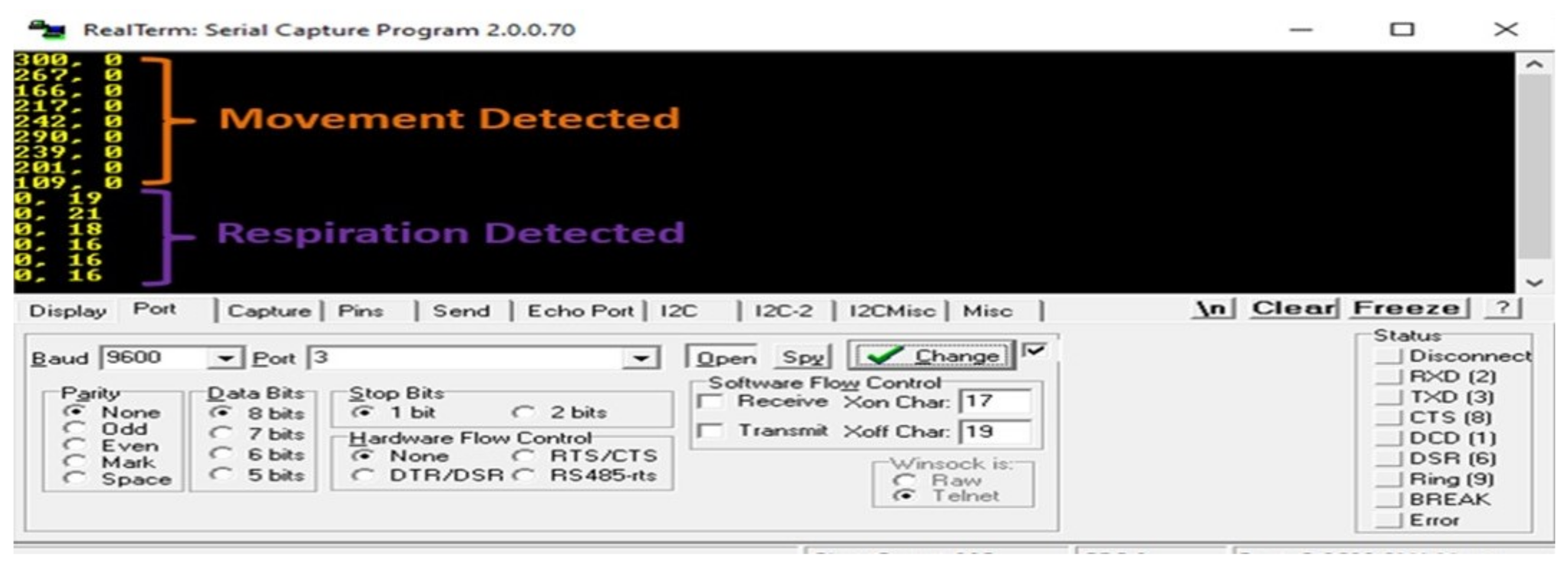
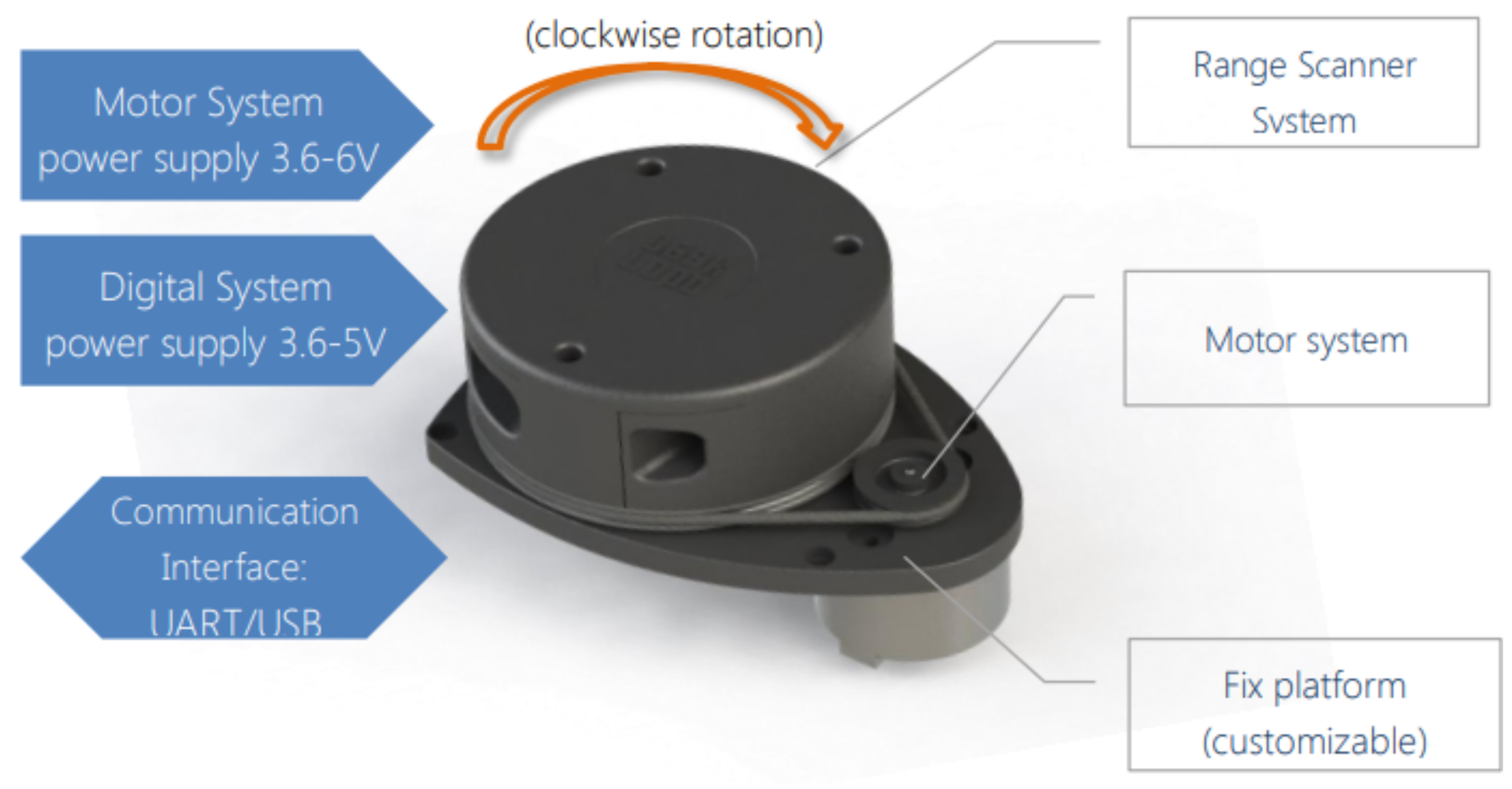
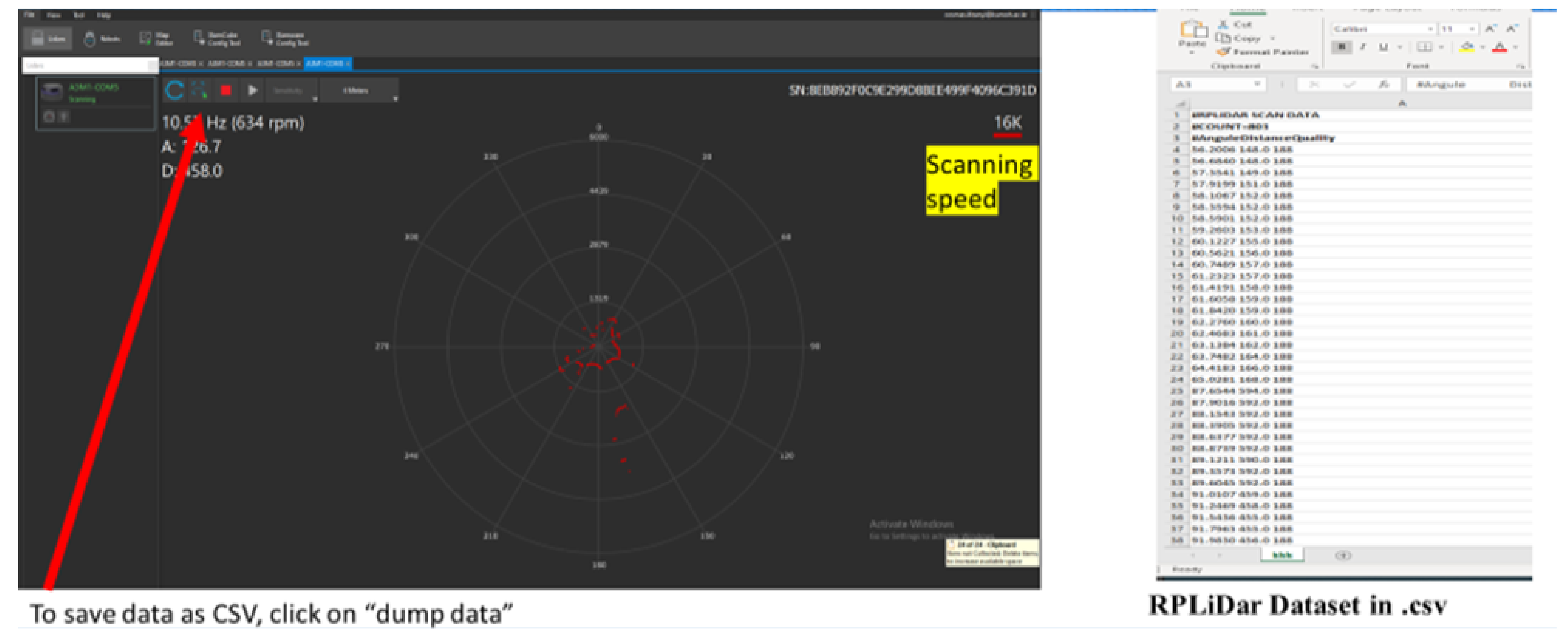


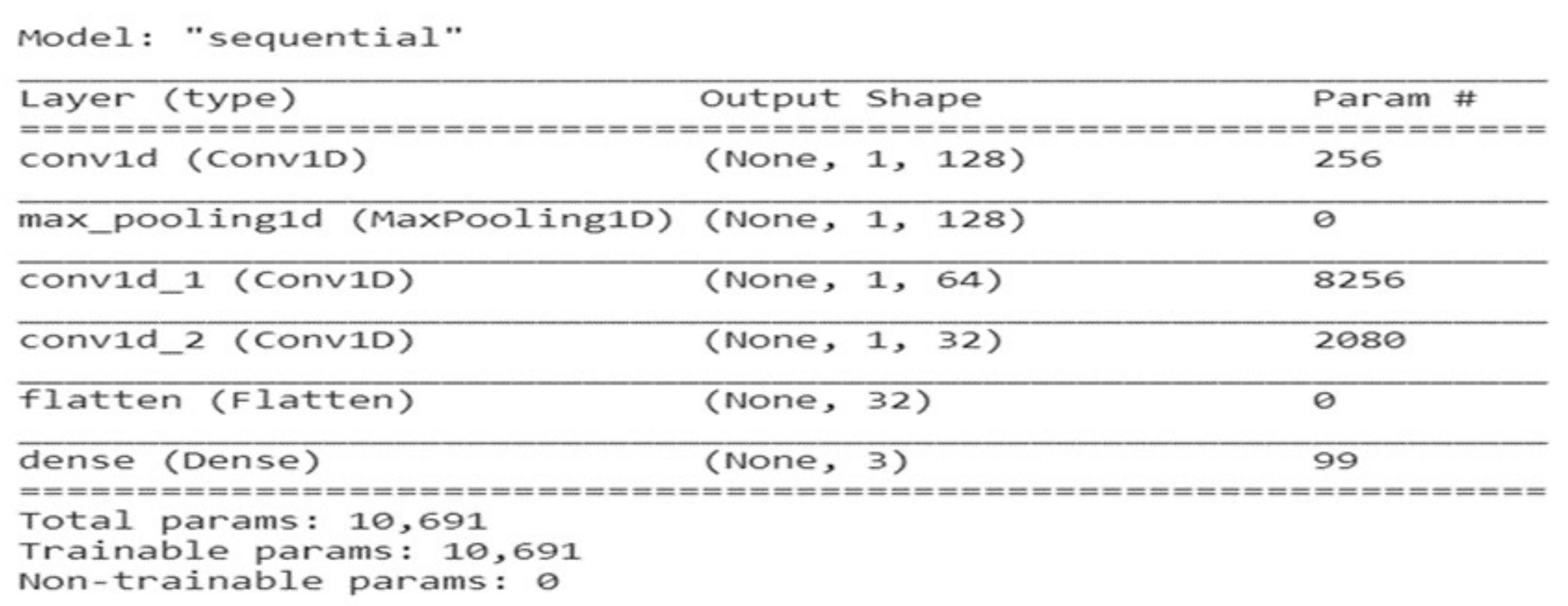
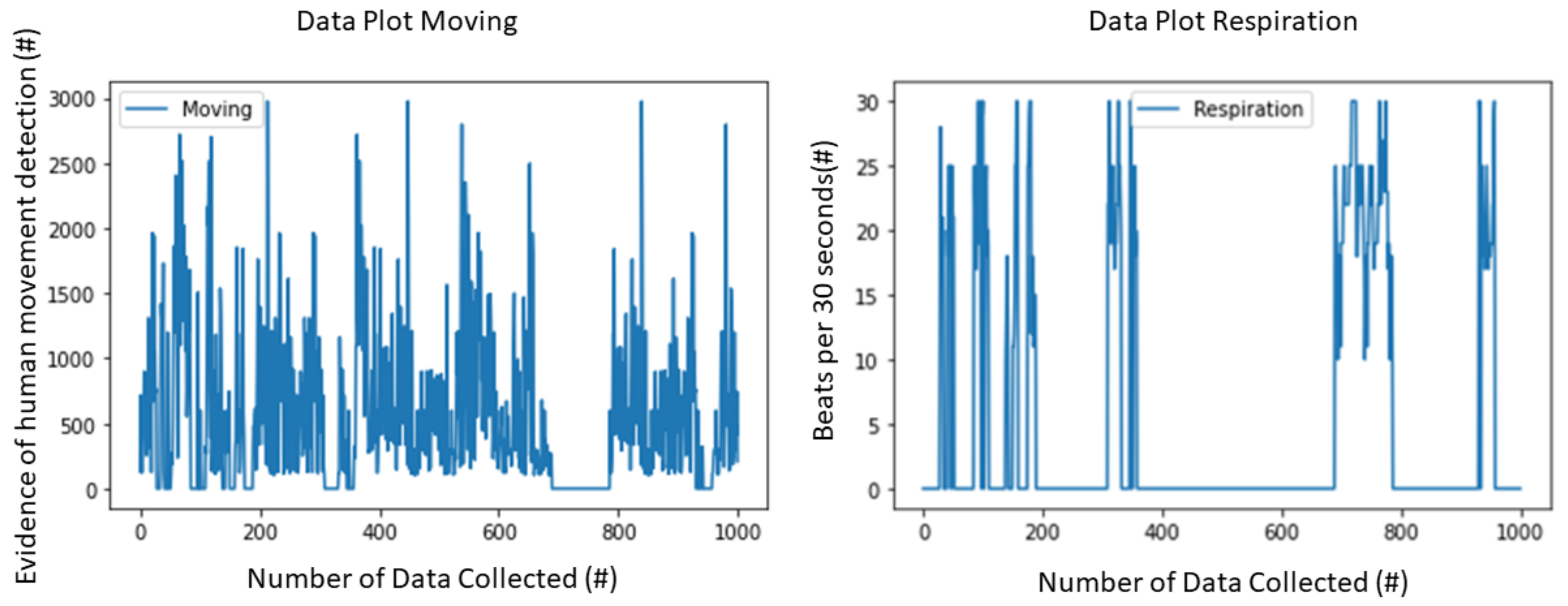
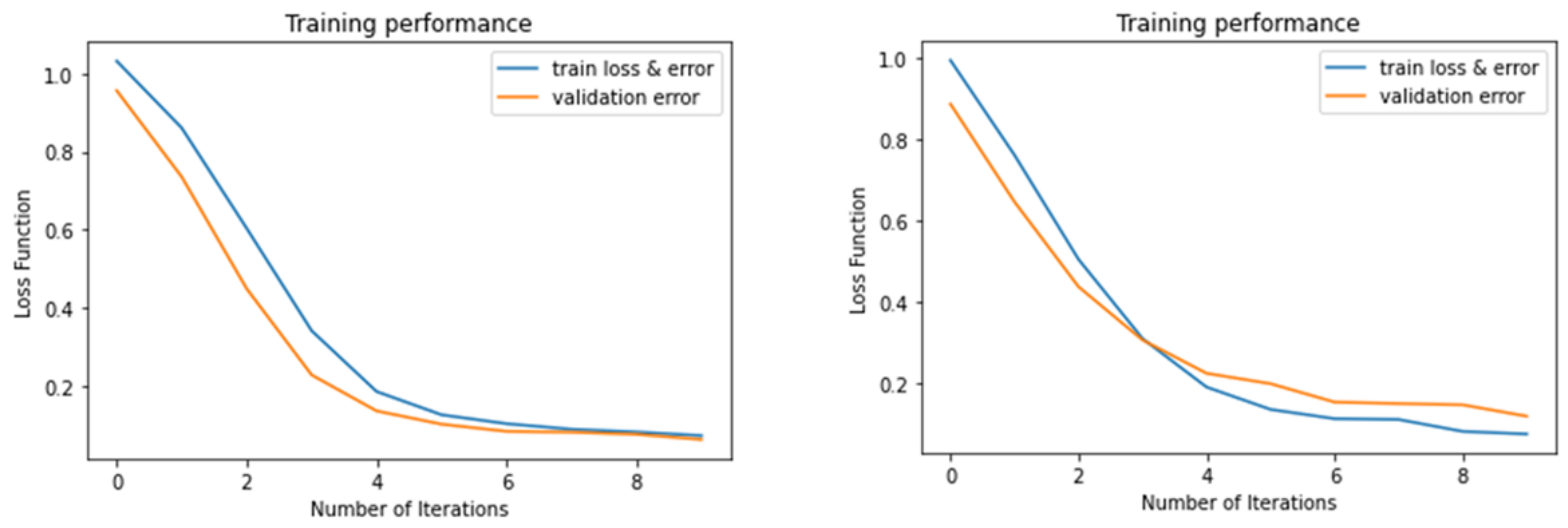
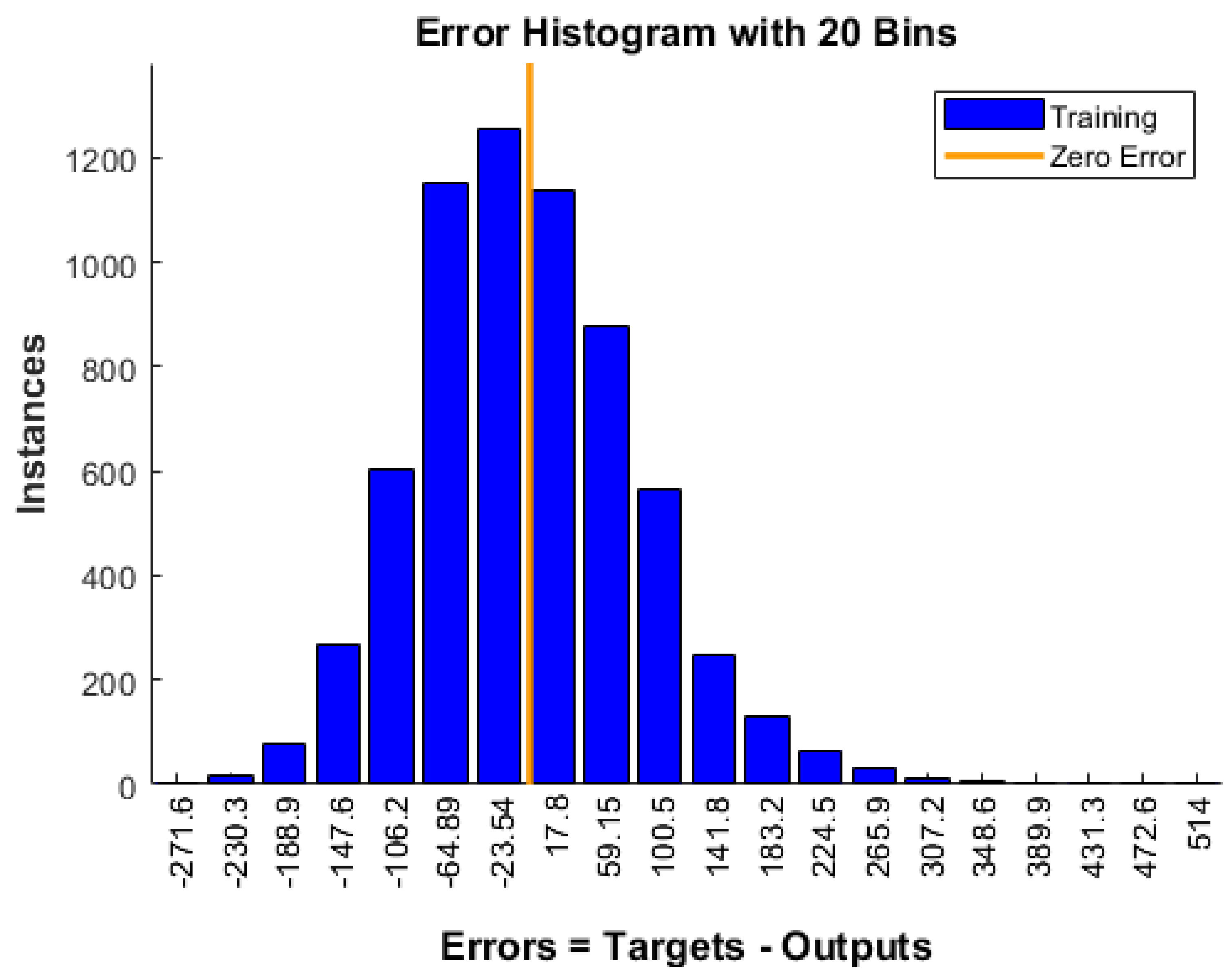
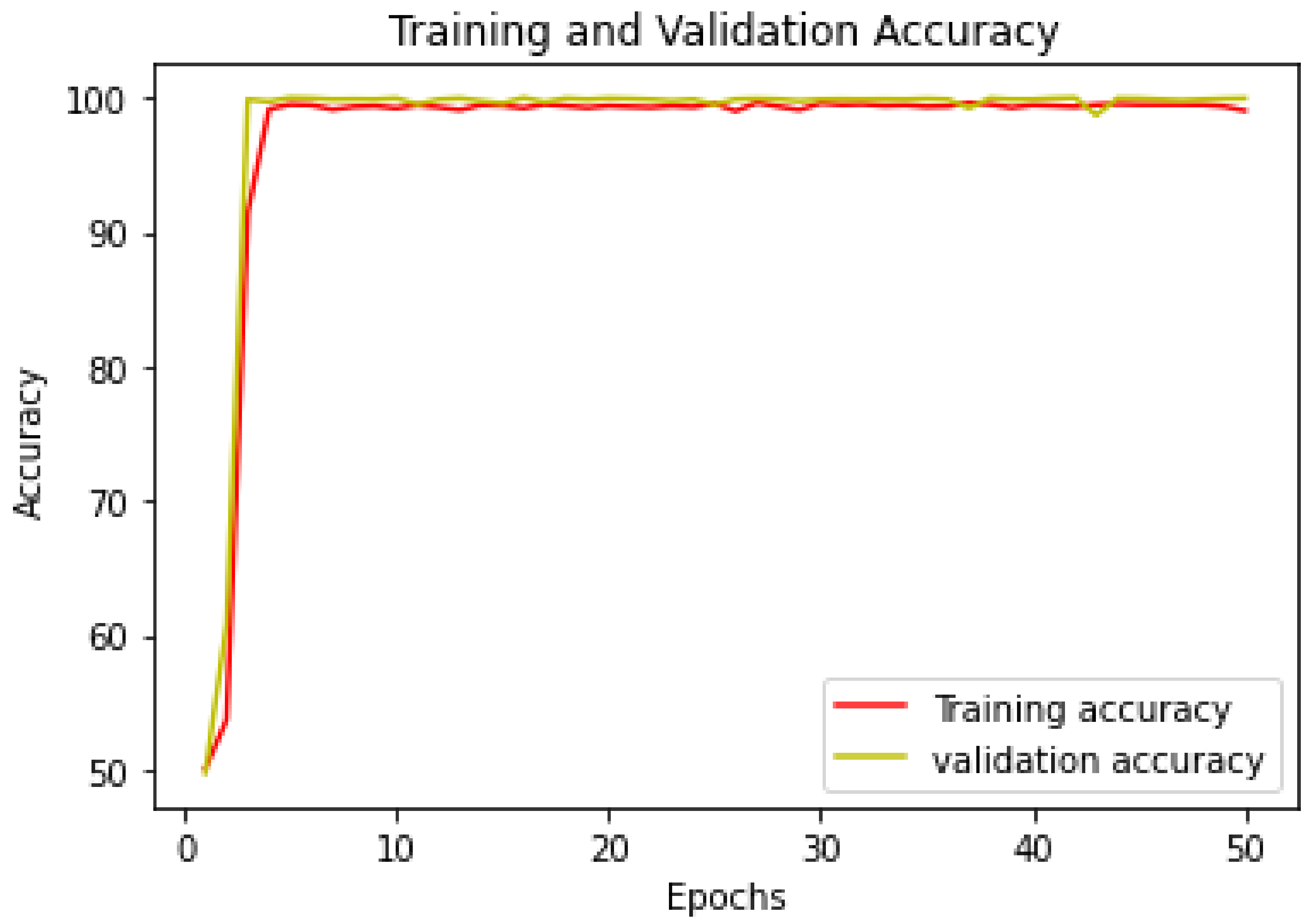
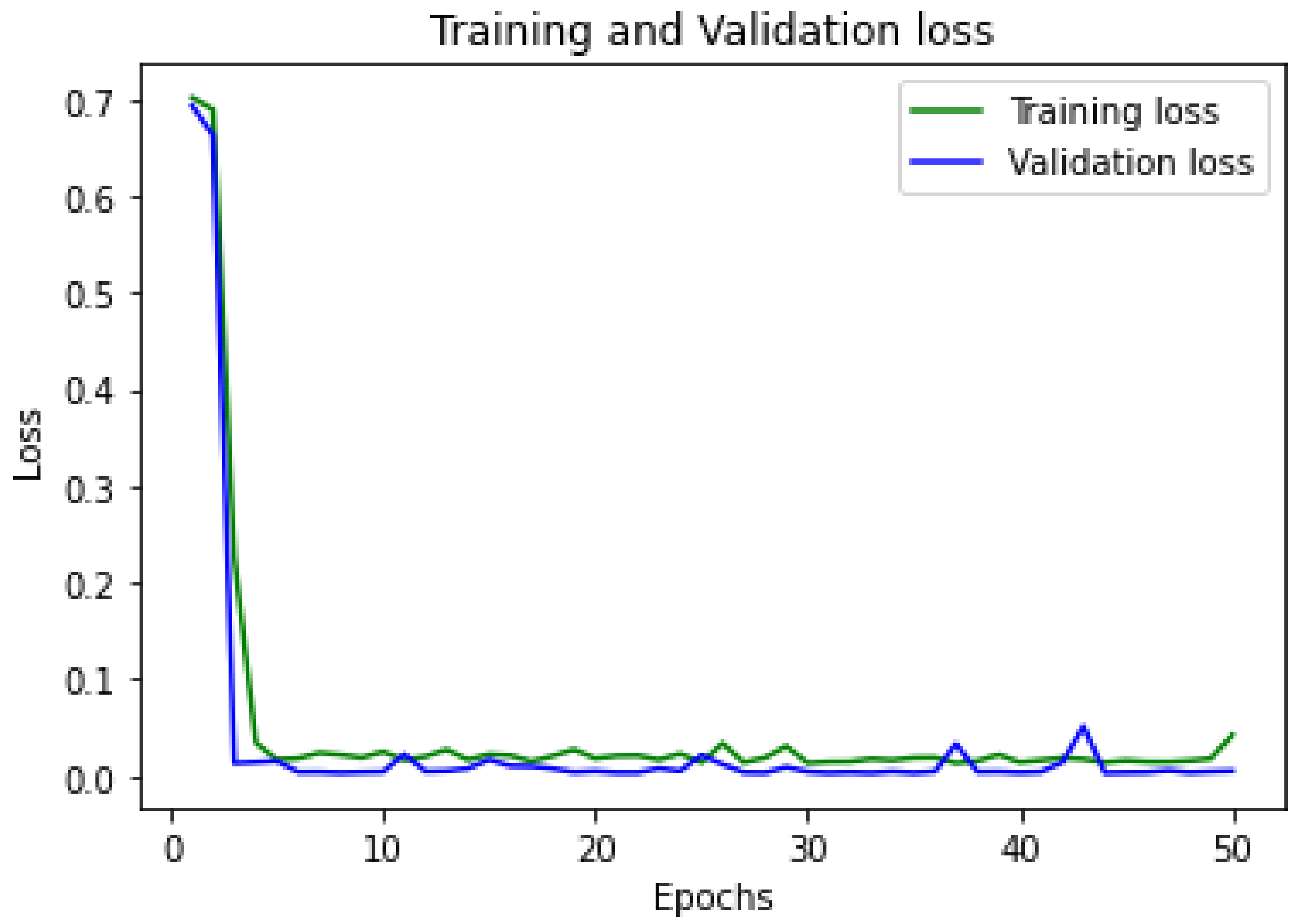
| CNN and ML Models | Vibration | Movement | Breathing | RP-LIDAR Dataset |
|---|---|---|---|---|
| SVM | 57.03% | |||
| LR | 88.42% | |||
| NB | 78.87% | |||
| KNN | 94.20% | |||
| CNN | 99.45% |
Publisher’s Note: MDPI stays neutral with regard to jurisdictional claims in published maps and institutional affiliations. |
© 2021 by the authors. Licensee MDPI, Basel, Switzerland. This article is an open access article distributed under the terms and conditions of the Creative Commons Attribution (CC BY) license (https://creativecommons.org/licenses/by/4.0/).
Share and Cite
Nwakanma, C.I.; Islam, F.B.; Maharani, M.P.; Lee, J.-M.; Kim, D.-S. Detection and Classification of Human Activity for Emergency Response in Smart Factory Shop Floor. Appl. Sci. 2021, 11, 3662. https://doi.org/10.3390/app11083662
Nwakanma CI, Islam FB, Maharani MP, Lee J-M, Kim D-S. Detection and Classification of Human Activity for Emergency Response in Smart Factory Shop Floor. Applied Sciences. 2021; 11(8):3662. https://doi.org/10.3390/app11083662
Chicago/Turabian StyleNwakanma, Cosmas Ifeanyi, Fabliha Bushra Islam, Mareska Pratiwi Maharani, Jae-Min Lee, and Dong-Seong Kim. 2021. "Detection and Classification of Human Activity for Emergency Response in Smart Factory Shop Floor" Applied Sciences 11, no. 8: 3662. https://doi.org/10.3390/app11083662
APA StyleNwakanma, C. I., Islam, F. B., Maharani, M. P., Lee, J.-M., & Kim, D.-S. (2021). Detection and Classification of Human Activity for Emergency Response in Smart Factory Shop Floor. Applied Sciences, 11(8), 3662. https://doi.org/10.3390/app11083662








